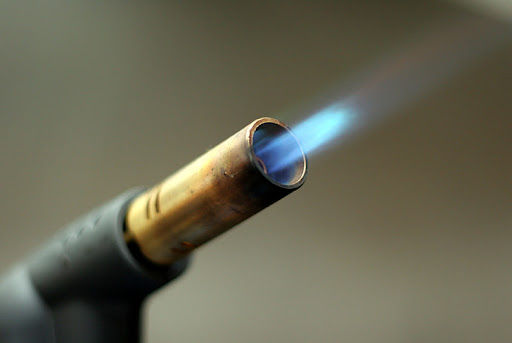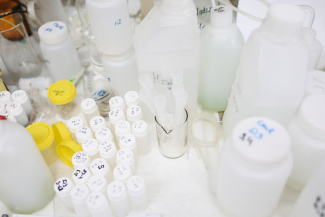Incident Lessons Learned: Gas Line Fire
22 August 2023

Summary
A lab technician was heating glass using a natural gas and oxygen fueled hand torch. A flashback occurred and the torch extinguished, but the oxygen supply line caught fire. The technician immediately dropped the torch and turned off the supply lines, cutting off the fuel and extinguishing the fire. The oxygen line was also equipped with a flash arrestor which helped to prevent the flash fire from reaching the oxygen cylinder.
During the investigation, it was noted that the torches in the lab were many years old and had faulty valves that were too loose, making it difficult to get the appropriate mixture of gas. It is not known if this contributed to the fire.
Consequences
This incident had the potential to cause severe injuries and or significant property damage. Fortunately, there were no injuries and the only damage was a damaged torch and supply line and a small burn mark on the floor. The technician’s quick actions prevented the fire from becoming larger and causing more damage.
Culture of Care
The technician’s training, knowledge and quick action protected themselves and everyone else in the building from potentially dealing with a fire requiring evacuation. The lab had appropriate engineering controls (flash arrestor) and proper emergency procedures for managing a flashback fire. A lesson learned from this incident was to inspect the equipment and determine an appropriate preventative maintenance and/or replacement schedule to prevent future flashbacks.
Call to Action
Fire safety is serious and impacts you, your lab, everyone else in the building and in some cases, neighboring buildings as well. Be sure to review your fire prevention and response plan regularly so you know how to avoid a fire and what to do if a fire occurs in your work area. In addition, if you work with flammable or oxidizing gases and an ignition source (open flame, sparks, etc.) make sure:
- you know where the fuel shut off valve is located.
- it is equipped with proper engineering controls to protect the supply line from fire.
- your equipment is operating properly. If there is an issue, take the equipment out of service (tag it so others know) and find a proper replacement. Look into preventative maintenance for your equipment, such as regular replacement of valve stems.
The University of Alberta is committed to the safety, health and well-being of our faculty, staff and students. Every day, we advance this commitment to safety through the Culture of Care.
Related resources
- Incident Lessons Learned - Needlestick Injury (Google Doc)
- Culture of Care Safety Action Plan
- HSE Hazard Management webpage: links to hazard assessment templates and instructions



